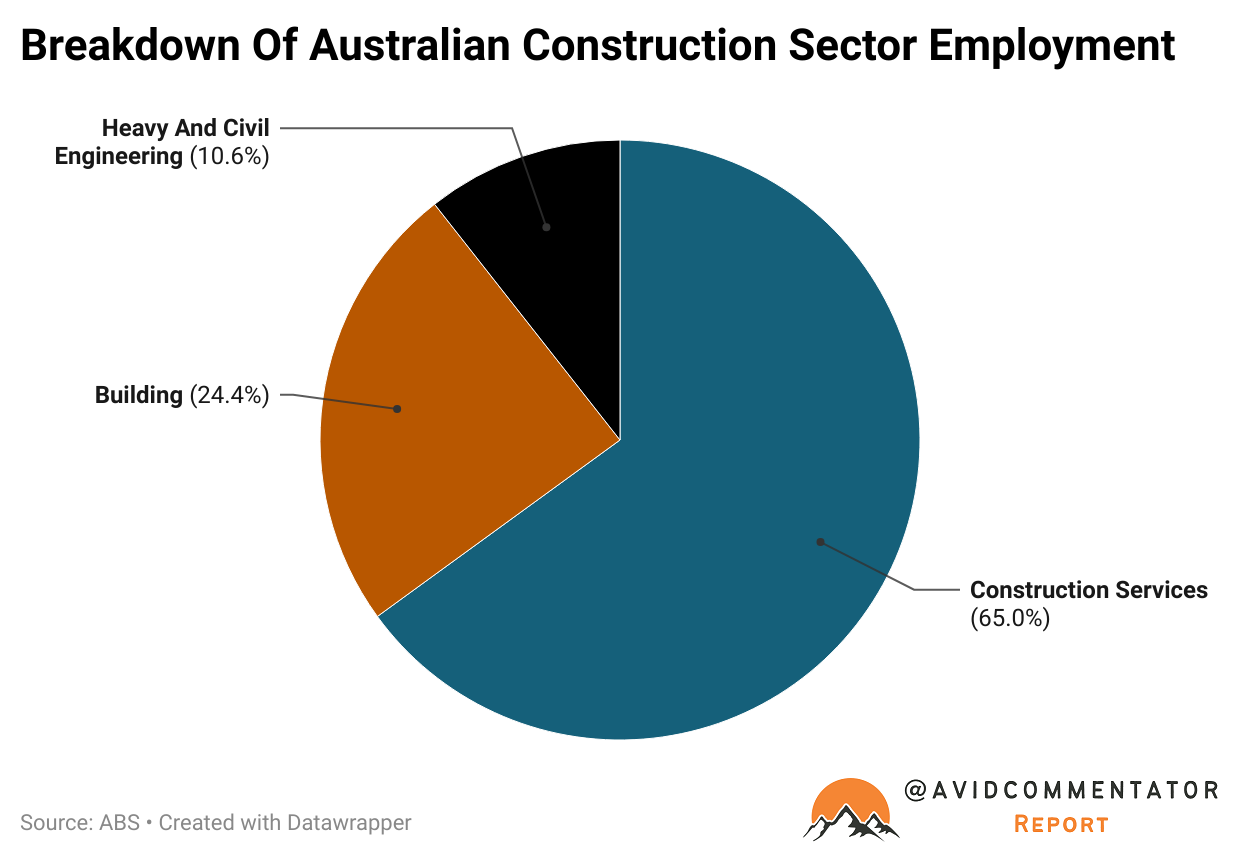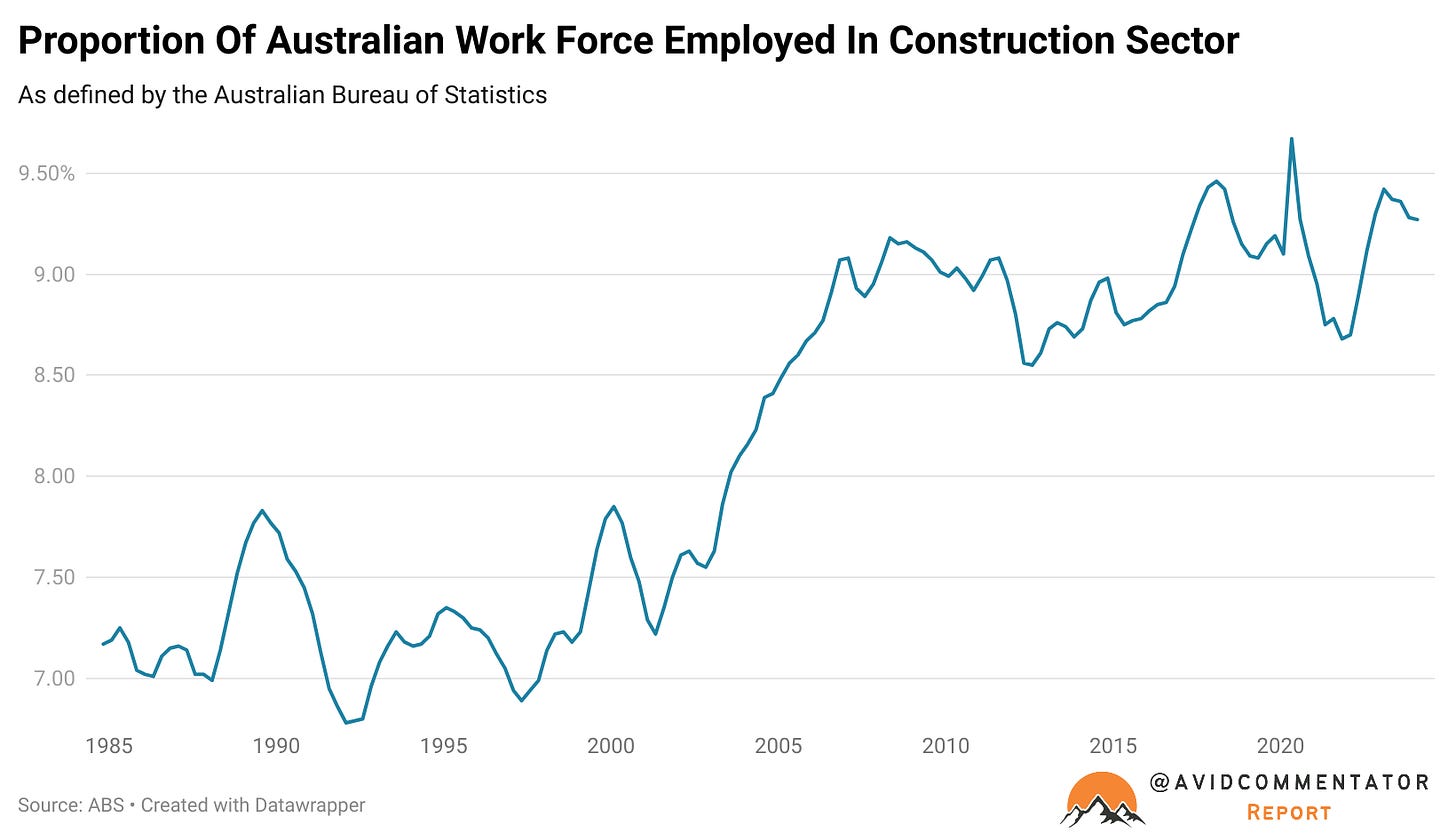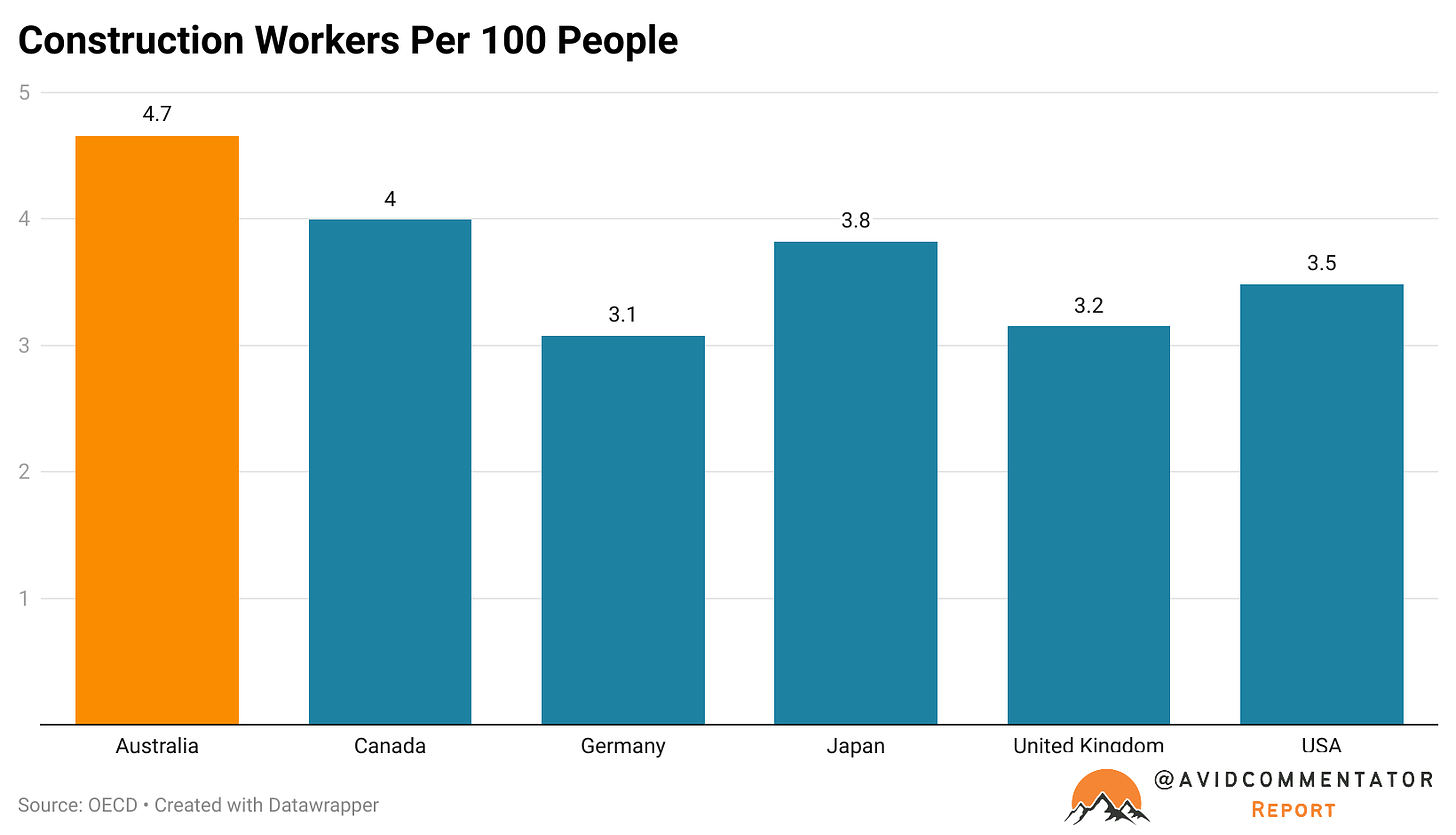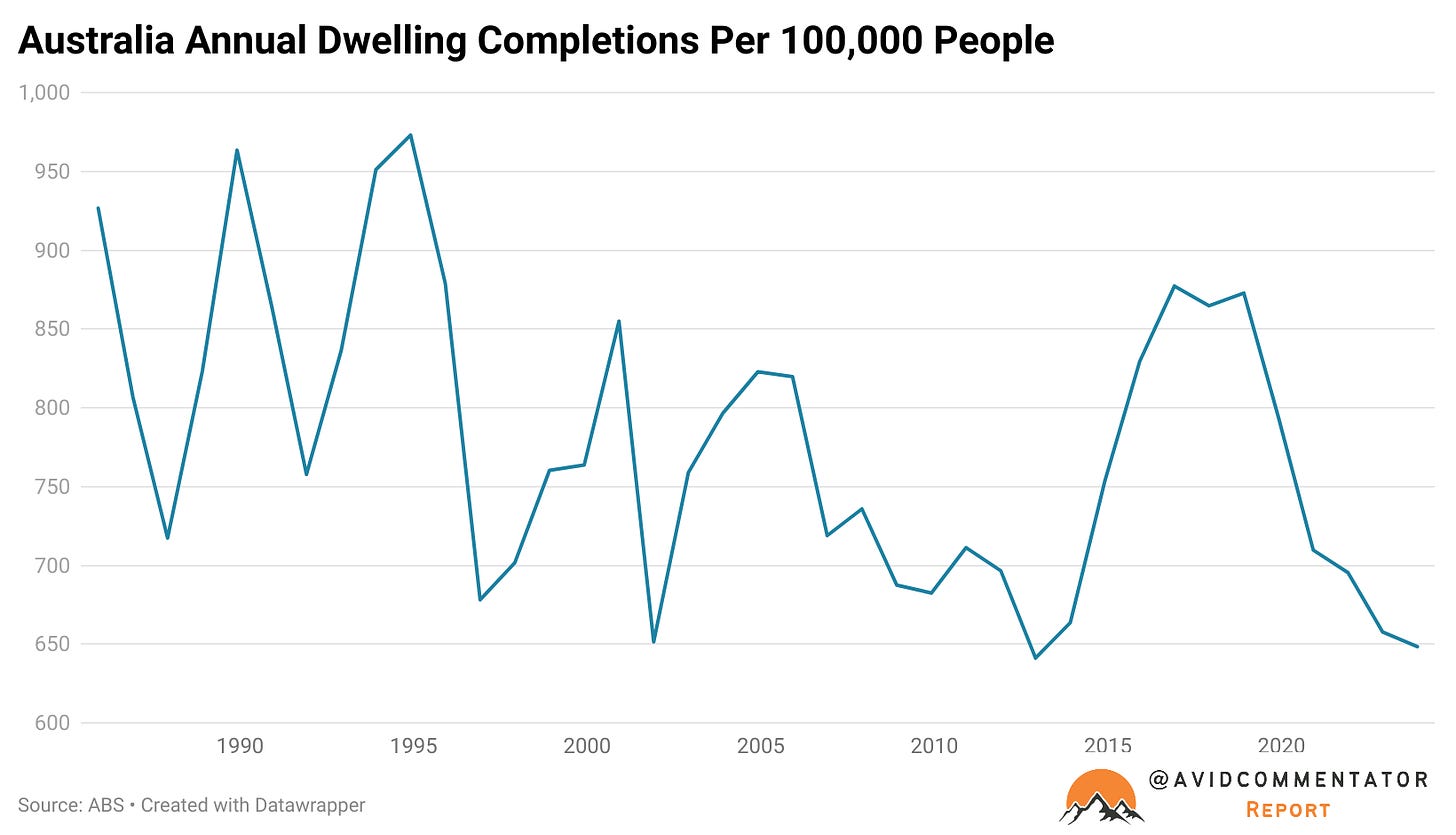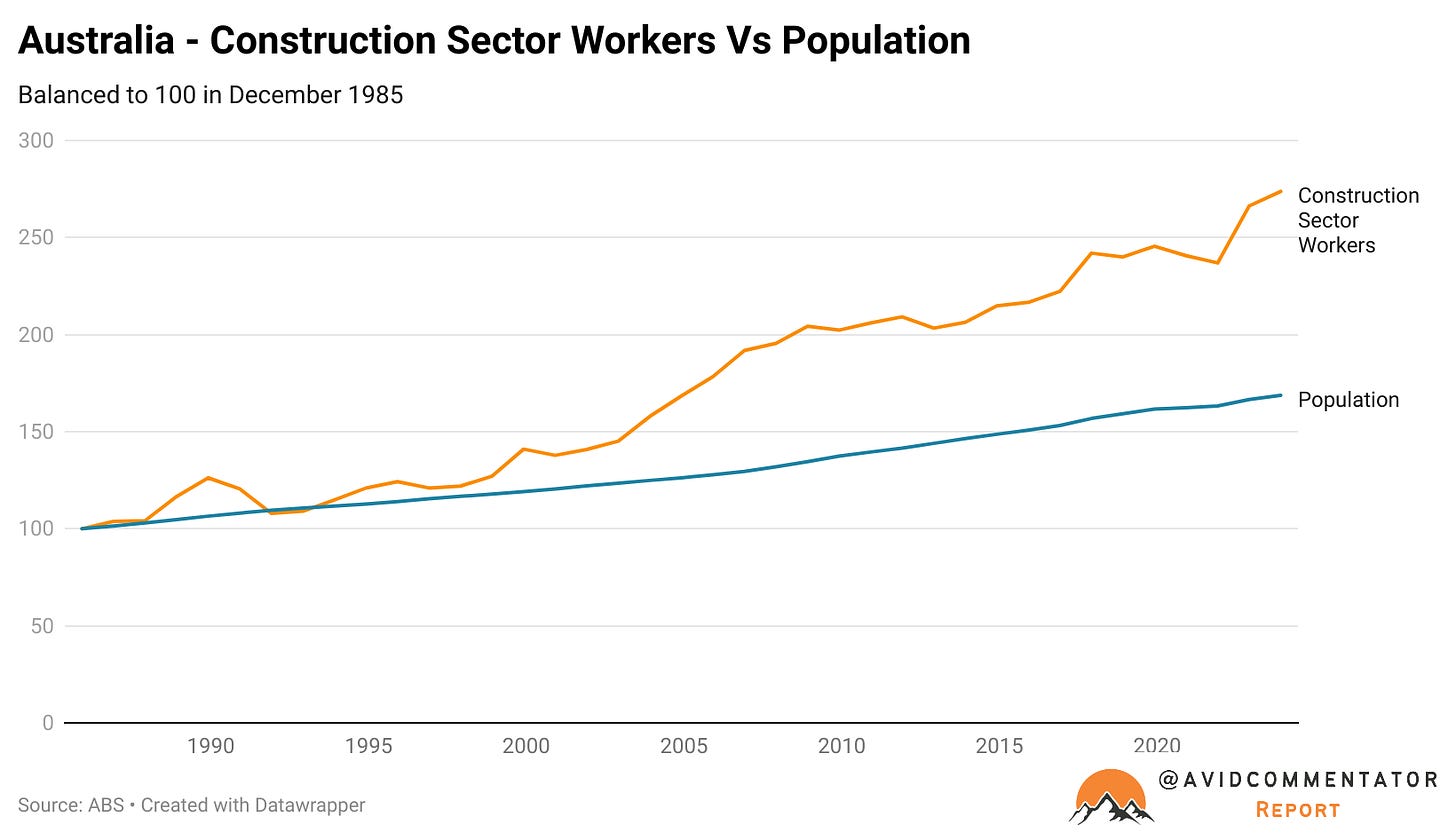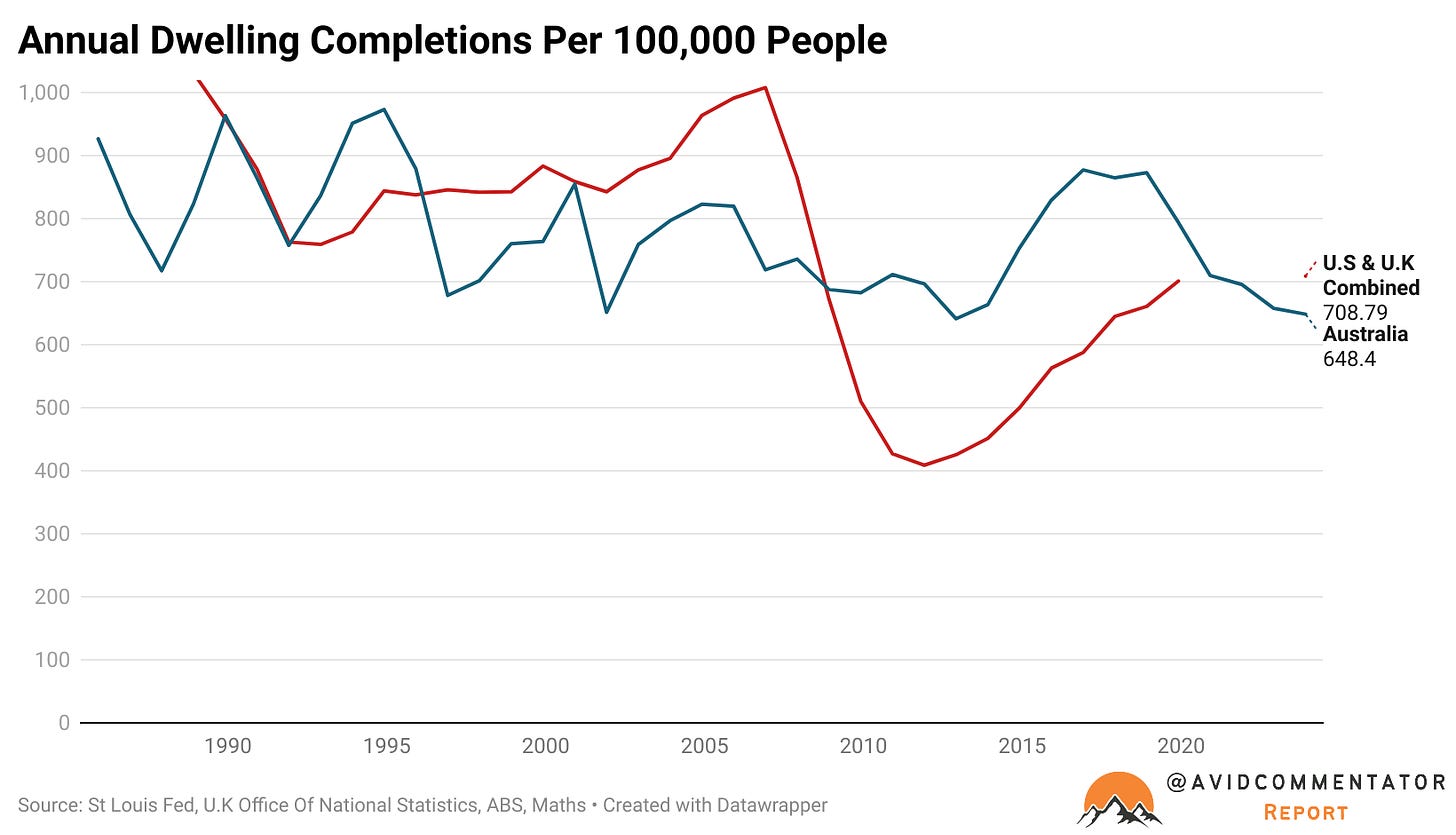Australia's Construction Sector - An Inefficient And Now Highly Vulnerable Juggernaut
Has The Golden Goose's Luck Finally Run Out?
As the debate over housing and the targets for new home completions continues to rage in the halls of power in Canberra, there are several rather key factors that remain largely overlooked. The efficiency of the construction sector and the multitude of barriers that stand in the way of these goals being achieved.
Amidst an atmosphere of higher interest rates, the highest real cost to build a new home on record and a market that has spent much of the last 5 years bringing forward demand with various government grants and support measures for the construction sector, there are growing risks it could all go south for one of Australia’s relatively few truly protected industries.
In order to provide a degree of clarity on these issues, we’ll be looking at the following:
Size of the construction sector in nominal terms and as a proportion of the workforce.
Proportion of the population employed in the construction sector compared with other developed nations.
Current dwelling completions per capita compared with historical norms.
Growth in the size of the construction sector vs the broader population over time.
Australian dwelling completions per capita compared with other large Anglosphere nations since the mid-1980s.
Dwelling completions per construction sector worker over time.
Average new house sizes over time.
Average amount of newly completed residential living space per construction worker per year.
The impact of public infrastructure and engineering construction on dwelling construction.
Historic dwelling completion drawdowns over time.
What a bounce back in dwelling completions could look like based on historic averages and an absolutely ideal repeat of a previous cycle.
Cost of an average new house over time.
Proportion of newly completed homes not adding to net dwelling stock.
How Big Is Australia’s Construction Sector?
According to the latest figures from the Australian Bureau of Statistics, the construction sector employs 1.325 million workers, made up of 306k who are defined as part of building construction, 815k in construction services and 133k in heavy and civil engineering construction. This amounts to 9.27% of the overall work force.
The proportion of Australian’s employed in the construction sector has also varied dramatically over time. When records began in 1984, 7.17% of the workforce was employed in the construction sector, with an all time peak of 9.67% being recorded in May 2020. As of the latest data, 9.27% of the work force is currently employed in the construction sector, well above the historical average.
There are a few instances where Australia can claim to be truly top tier and the relative size of the nation’s construction sector is one of them. According to data from the OECD, Australia’s construction sector employs a greater proportion of the population from the cradle to the grave than almost anywhere else in the developed world.
In relative terms Australia’s construction sector employs 47.7% more workers than in the U.K and 33.6% than in the United States.
How Are Dwelling Completion Outcomes Faring?
In some ways this is a question that has several different outcomes depending on the perspective with which its approached. For example, if we were to approach the issue purely through the lens of historic completions, one could conclude that things are really going quite badly.
The current level of 648 new dwellings per 100,000 people being completed each year is down by a little over 1/3 compared with its peak in 1994.
However, since 1994 the construction sector has expanded at a much faster rate than the population, with the sector growing by 126.3% compared with 49.6% for the broader population.
Despite the enormous expansion of the number of workers in the sector, completion outcomes have declined significantly over time.
Looking at these numbers and how far the construction sector has fallen from its peak, one would imagine that relative to its peers it wasn’t doing too great on completions per capita.
But in an ironic twist the opposite is true. Like a big lumbering Aussie made V8 engine, it does not perform anywhere near as efficiently as its size implies it potentially could, but its so large that it still manages to blow its competition out of the water. In fact, between 2008 and 2019, Australia built more homes per capita each year than the U.S and U.K construction sectors put together.
Keep reading with a 7-day free trial
Subscribe to Avid Commentator Report to keep reading this post and get 7 days of free access to the full post archives.





